- Digestion is the process of breaking down food into smaller particles that can be absorbed easily and used by our bodies. Digestion begins in the mouth.



The digestive system comprises of the following parts:


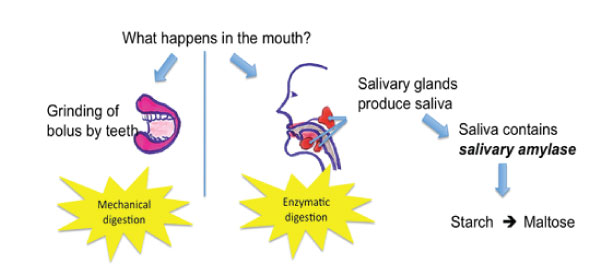
A person has two sets of teeth. The first set is the milk teeth also called the deciduous teeth. This set consists of incisors, canines and premolars only. The total number of milk teeth is 20.
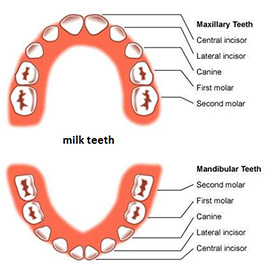
The second set is composed of 32 teeth. This set is called the permanent teeth and it replaces the milk teeth.
The permanent set of teeth consists of incisors,canines, premolars and molars.
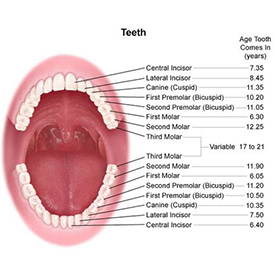
There are four different types of teeth:
[resource: 2061, align: left]
Teeth should be cleaned after every meal to prevent tooth decay. Tooth decay is caused by food remains that remain in the mouth, in between the teeth and gum after feeding.
The part of teeth called pulp cavity carries blood vessels to provide nutrients and oxygen to the teeth. The pulp cavity also carries nerves.
This video shows how to brush teeth
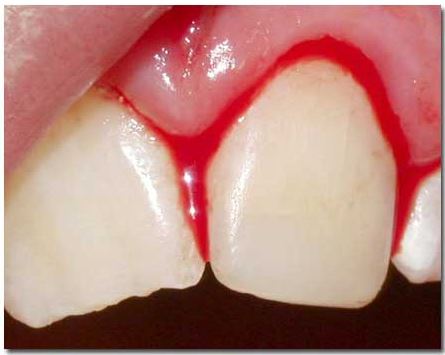
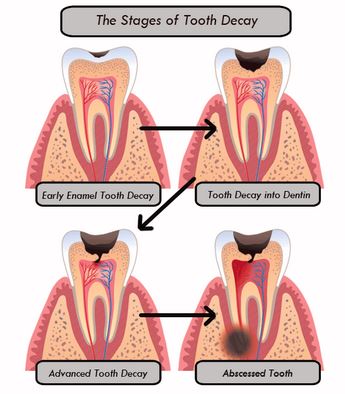
Avoid eating sugary foods such as sweets and biscuits or drinking sugary juices.
Clean teeth and mouth using a toothbrush and toothpaste or salt after every meal and then rinse the mouth with warm water.
Toothbrush
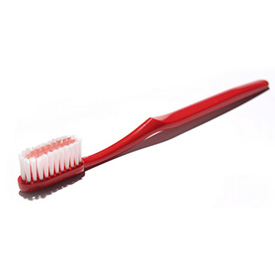
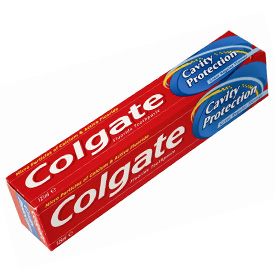
A chewed stick from non poisonous plants may be used as a tooth brush.Chew one end of the stick until it becomes soft. It can then be used with some salt or toothpaste.
African toothbrush
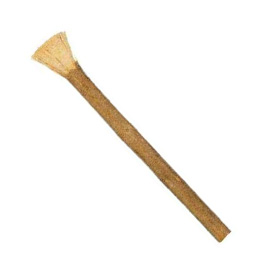
Teeth are made of a very hard substance called dentine, which in turn is covered by even a harder substance called enamel.
The inner structure of a tooth
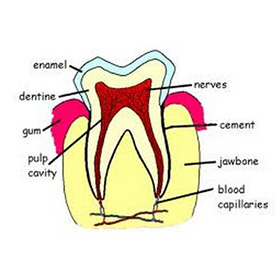

Carrots and coconuts


Fluoride toothpaste

dental floss

The stomach is like an elastic bag that keeps food temporarily. The stomach mixes the food continuously therefore breaking it up and then release some small amount at a time into the intestines.

The intestine is divided into the small intestine and the large intestine.
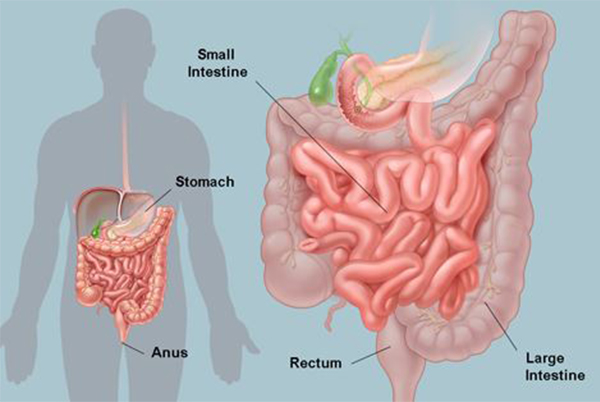
The small intestine is a long narrow tube between the stomach and the large intestine where:
Functions of the large intestine include:
Produces chemicals (pancreatic juice) which continue the digestion of protein (found in foods like meat) and starch (found in maize).

Liver
Produces the bile used to start the digestion of fats and oils.
It holds the indegestive material (waste matter and releases it to the anus).
Passes out the indigestible materials out of the body.
Standard 5
1. Kamau chewed a piece of meat for some time and then swallowed it. At which part of his digestive system did the digestion of the meat start?
A. Mouth B. Stomach C. Small intestines D. Large intestines
Study the diagram below and answer questions 2 and 3.
2. The parts labeled F, G and H are 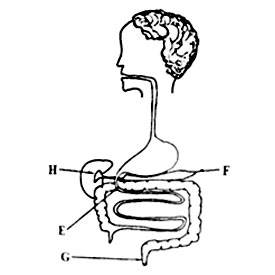
|
F |
G |
H |
| A. Pancreas |
Rectum |
Gall bladder |
| B. Gall bladder |
Rectum |
Pancreas |
| C. Gall bladder |
Pancreas |
Rectum |
| D. Pancreas |
Gall bladder |
Rectum |
3. For which of the following food types does digestion start at E?
A. Carbohydrates B. Proteins C. Vitamins D. Fats
4. Which of the following is a function of the pancreas? It
A. Absorbs digested food. B. Produces digestive juice.
C. Absorbs water D. Stores digested food
5. In which of the following parts of the digestive system does absorption of food take place?
A. Duodenum B. Small intestines
C. Stomach D. Large intestine
6. Which of the following body structures in the table below is NOT CORRECTLY matched to its function?
|
Structure |
Function |
| A. Villi |
Absorb digested food |
| B. Large intestine |
Stores digested food |
| C. Pancreas |
Produces digestive juice |
| D. Mouth |
Food is broken down into small particles |
Health Education
Standard 4
Which one of the following DOES NOT help to prevent tooth decay?
A. Regular checking of teeth by a dentist
B. Eating sweets and sugary foods
C. Brushing teeth after every meal
D. Drinking plenty of milk regularly